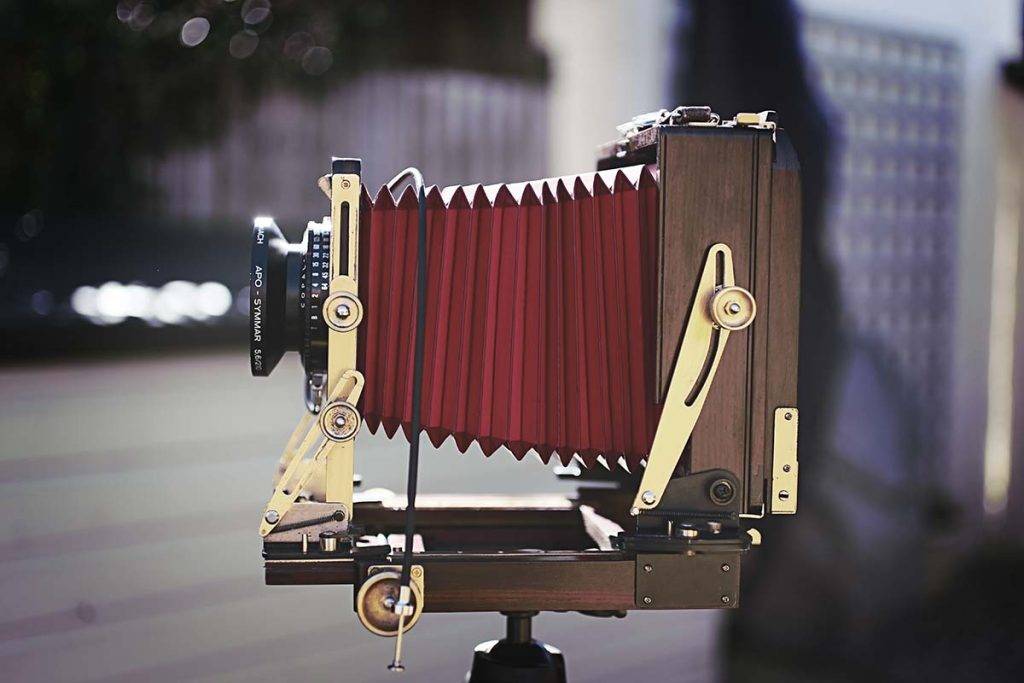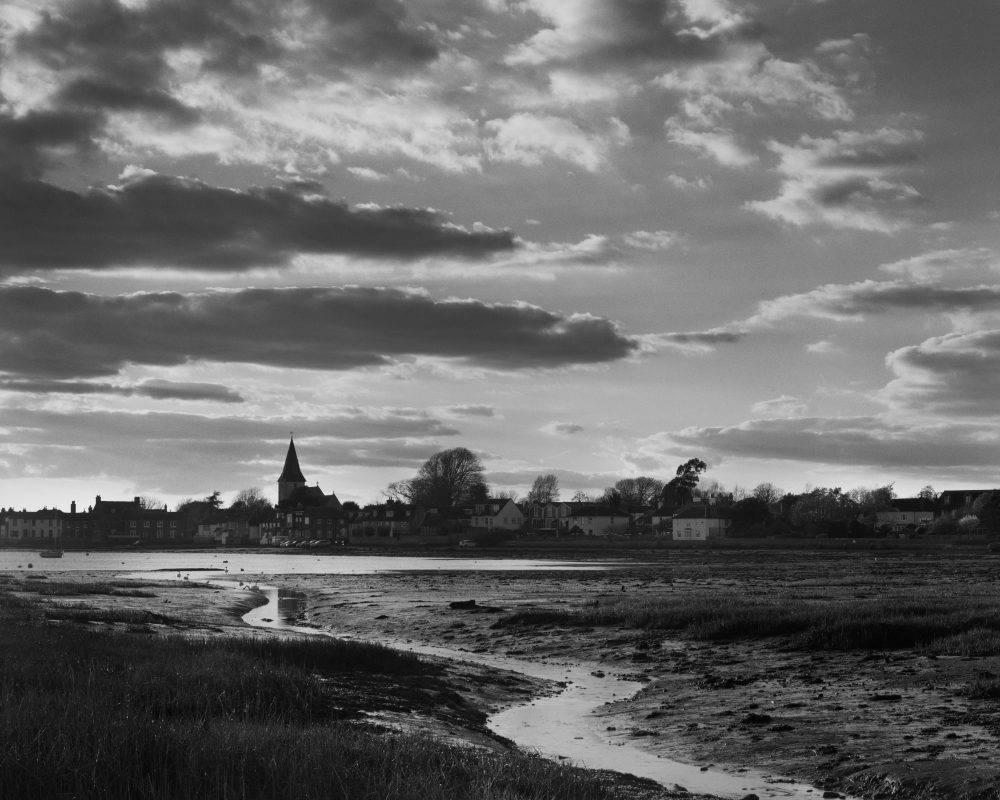
Large format cameras are rare. I have never bumped into another view camera user when I am out with mine. While it is easy now to meet other users online, large format camera users are a very small minority in the photography community as a whole. This can be a problem when buying a used camera, because often even reputable camera dealers will not have the expertise to check these cameras properly. Often the camera is an heirloom or sold by someone with little or no large format experience. In that case it is unlikely that the camera has been meaningfully checked at all.
Of course you can return the camera if you find a fault relatively quickly. However, if you are new to large format photography you might not know what to look for. Worse still you might mistake a camera fault for user error and soldier on when really the camera needs repair. In that case it might be a couple of months before you realise what has happened – possibly too late to return it.
These are the most common things to look out for when buying a used large format camera
Check the Bellows
The biggest weak spot in a used large format camera is the bellows. Camera bellows tend to have a life of around 10 years so they will need periodic replacement. Appearances can be deceptive. Bellows can look to be in good condition and have a pinhole in every corner. To check this extend the bellows as far as it will go and shine a light inside. In a dimly lit or dark room pinholes in the corners of the bellows should be readily apparent. If the bellows do have holes in it is not the end of the world. There are custom bellows suppliers that will make you a new set but they will cost around £100.
Pinholed bellows are not necessarily a deal breaker. However, if you find them before purchase you can try to negotiate a better price. If they are not too bad they can be fixed with T-shirt paint (the kind with vinyl in it) or tape, albeit temporarily. Wrapping your dark cloth around the bellows will keep out the light too and is a good habit to get into.
Cracked wood/Bent Metal
Most field cameras use wood in their construction. If the camera has ever been dropped chances are the wood cracked and may have subsequently been glued back together. So make sure you check the wooden parts of the camera thoroughly. If you have a metal field or monorail camera the parts are more likely bent than broken so check for signs of damage and if the camera has standards with spirit levels check they agree with each other. Failing that use you own level to check parallelism.
Loose/missing fittings
A large format camera can have a wide variety of screws, nuts, and bolts holding it together. Check that they are all there and that they are tightened down.
Are the standards parallel?
Another important check is to make sure that when the camera is zeroed the standards are parallel to each other and perpendicular to the base of the camera. First I will explain what I mean by zeroed. When you set up most large format cameras the struts and standards have little indentations (detents) in them. So when you unfold the camera, they click into place and they should be perpendicular to the base and parallel to each other. You can check this by putting it on a tripod, unfolding it and then checking everything with a spirit level. Some cameras have spirit levels built in, but a separate short level for DIY will be more accurate.
Not all cameras have detents on every movement. Sometimes you have to align things by matching two arrows or even just by eye with a spirit level. Going through this process should at the very least give you an insight into how easy a camera is to set up. More importantly it will tell you if the camera has had any wear or misuse that will affect its accuracy, or lead to blurred edges or corners from misalignment.
Does it lock down properly?
The next thing to check is whether all the controls tighten properly. If the camera has plastic knobs or clamps, first check that there are no cracks or repairs to them. If that is OK then check that every control screws down tightly. When the thread is damaged, either the knob will spin and not tighten down or it might feel tight but not has secured that movement. Also check there isn’t too much play in the standards. Even a solid 4×5 standard will move a little if you try to wobble it. But it shouldn’t be much
Ground Glass
The ground glass is the second weak point on the camera. It goes without saying you need to check it isn’t cracked. The ground glass is the easiest part of the camera to replace. Don’t be too worried if its broken, but negotiate a better price if you feel it’s warranted. It is more difficult to check is whether it is fitted properly. It is not uncommon for a replacement ground glass to be installed incorrectly.
Sometimes a previous user may have removed a broken old screen and fitted a new one incorrectly, most often by losing shims that were supposed to go under the ground glass. The other common error is fitting a Fresnel screen on the wrong side of the glass. Always look for signs that the ground glass has recently been replaced and ask questions!
If the Fresnel is in the wrong place it usually a five minute fix, but different models have either below or on top of the ground glass so you’ll have to do your research. You can check the accuracy of the ground glass by shooting a ruler or newspaper at a 45 degree angle. Try and take more than one shot just to rule out an error in the film holder. Check that the focus point on the film matches what you saw on the ground glass.
Also check the screws that secure the ground glass. Damaged screws might make replacing the ground glass difficult in the future.
How old is it?
If looked after, view cameras can last for many decades. There are large format cameras still in use that date from a hundred years ago. However, the modern standard for backs and film holders only dates from 1951. What does this mean? Well in essence it means that film holders made after 1951 are all built to the same standard. So any film holder built after this time will fit any camera. If you find a nice camera that was built before then, you have to make sure it comes with film holders that fit that camera.
Makers before WW2 often made their own holders that would only fit their cameras. Of course this is not the whole story and many cameras will have been adapted later on to fit modern holders. But again make sure you ask the right questions if you find an older camera and are interested in buying it.
Who is selling a used large format camera to you?
As I mentioned in the introduction, not everyone selling a used large format camera knows how to check it properly. If you are buying from someone who is neither a dealer or has used the camera recently don’t pay top dollar and expect to replace the bellows at the very least. If you are buying from a dealer check that they regularly handle large format cameras and ask what checks they have done on the camera. Remember that a visual inspection of the bellows is not enough. It has to be checked with a light inside them and request that they do it if they haven’t already. Ideally, if you are buying from a private user it should be someone who has used the camera regularly. Get them to confirm it has been recently film tested if possible.
Summary
So if you are looking to buy a used large format camera here is a summary of what you should do.
- Ask lots of questions. The more questions you ask the less likely it is that you’ll get a defective camera
- Be wary of buying from someone who has limited knowledge of large format cameras
- If you buy a camera online do all the checks above as quick as reasonably possible so you can return the camera before any time limitation on faults ends
- If you are buying in person bring a spirit level and a light source – don’t rushed into buying something if you have an opportunity to examine it first.
- If you find any minor faults try to see if the seller will move on the price.

thanks / I’m trying to help an art teacher friend sell his!